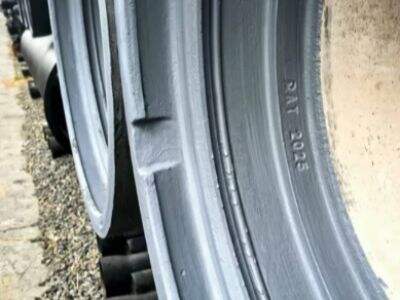Jika anda memasang sistem pengepaman baharu, penting untuk mengetahui cara melakukannya dengan betul. Sama ada untuk projek kecil atau susunan industri besar seperti kebanyakan yang kami kerjakan di Yongtong, memastikan reka bentuk dan pemasangan betul pada percubaan pertama boleh menjimatkan banyak masalah pada masa hadapan. Dalam manual ini, kami akan merangkumi asas-asas paip air keluli lenting reka bentuk sistem, dan memberikan beberapa petua untuk memastikan sistem anda berfungsi dengan lancar.
Asas Reka Bentuk Sistem Pengepaman
Perkara pertama yang perlu anda lakukan apabila memasang sebarang sistem paip yang baik adalah mengetahui apa yang diingini daripada sistem tersebut. Anda perlu memikirkan jenis cecair atau gas yang akan mengalir melalui paip ini. Ini akan memudahkan anda menentukan saiz paip yang diperlukan, sama ada besar atau kecil, serta jenis bahan yang paling sesuai. Ia sama seperti ketika anda memilih straw untuk minuman anda, anda tidak akan menggunakan pengacau kopi kecil untuk milkshake yang pekat.
Memilih Bahan Sistem Terbaik
Bahan yang betul ibarat baju besi yang sesuai untuk seorang kesatria: Ia mesti cukup kuat untuk melindungi kesatria tersebut, tetapi juga perlu sesuai dengan jenis pertempuran. Ia bergantung kepada apa yang perlu ditangani oleh sistem tersebut, dan di Yongtong kami bekerja dengan pelbagai bahan, seperti keluli, tembaga atau plastik. Setiap penyambung paip berflens membawa kelebihannya tersendiri, contohnya plastik lebih berpatutan dan lebih mudah dipasang, tetapi mungkin tidak tahan terhadap haba sebaik logam.
Mencipta lantai yang memaksimumkan aliran
Menyusun paip adalah seperti mereka bentuk trek perlumbaan. Anda mahukan laluan terpantas dan paling diperkemas untuk aliran anda — dengan sesedikit mungkin halangan. Ini bermakna anda perlu memetakan laluan paip anda sedemikian rupa untuk menghapuskan selekoh atau selekoh yang tidak perlu yang boleh memperlahankan aliran atau menyekatnya sama sekali.
Bagaimana cara memasang dan menyelenggara paip?
Pemasangan sistem paip yang betul adalah penting untuk mencegah kebocoran dan kerosakan. Pastikan semua sambungan ketat dan tiada paip Berflens dibiarkan di bawah rumah supaya ia tidak menggelembung dan pecah. Pemeriksaan berkala juga sama pentingnya, tambahnya; lebih mudah menangani masalah kecil pada peringkat awal daripada menunggu ia menjadi bencana besar.
Penyelesaian Masalah dan Penyahpejam bagi Masalah Paip Biasa
Masalah biasa termasuk kebocoran, penyumbatan dan kehilangan tekanan air. Di Yongtong, kami sentiasa mencadangkan agar anda menyimpan log penyelenggaraan untuk merekodkan apa yang berlaku supaya anda tahu apa yang telah dibaikpulih dan apa yang memerlukan sedikit penjagaan khas. Dengan cara ini, anda boleh mengenal pasti corak dan menyelesaikan punca masalah dengan lebih cepat.


